You’re passionate about fitness and eager to help others achieve a healthy lifestyle. Options for doing so abound, as many wonderful career paths center around wellness in all its forms. Likewise, many academic pursuits prepare you for a successful career in health and wellness. With so many potential paths forward, how do you decide which field to pursue?
To the uninitiated, terms such as exercise science, sports medicine, kinesiology and physiology seem practically interchangeable. However, they reference decidedly different concerns. They all require a thorough understanding of anatomy and other foundational topics, but they begin to diverge considerably as you get into the elite levels of study and professionalism.
To clear up the confusion and help you determine which exercise-related field is right for you, we’ve highlighted key similarities and differences between the many professional designations involved in this field:
Exercise Science Defined
Exercise science is an all-encompassing field that integrates many areas of study to provide a well-rounded understanding of anatomy as it relates to fitness and general wellness. The National Library of Medicine’s Collection Development Guidelines defines exercise science as the “scientific study of human movement performed to maintain or improve physical fitness.”
Keiser University’s exercise science program coordinator Dr. Jeff Williams refers to this as an “umbrella term” that signals a research-oriented approach to assisting teams and individuals. This vast field applies practices such as kinesiology, biomechanics and exercise physiology to help many types of people improve their fitness and mobility.
Similar Niches & Areas of Study
While it’s arguably the most comprehensive study involving movement and the human body, exercise science is just one of the numerous topics centered around how the body functions. Below, we’ve outlined several related areas of study, including those that are core components of exercise science and a few that are more loosely related.
Sport Science Vs. Sports Medicine
Sport science and sports medicine are both targeted practices related to exercise science. While both involve the unique needs of athletes, their scope differs dramatically.
Sports medicine focuses primarily on diagnosing and treating injuries that occur while exercising or participating in athletic activities. As a clinical field, it requires board certification and special licensure. Typically, it involves working on a team of specialists.
Sport science takes a broader view, detailing how a variety of scientific principles apply to athletic activities — and how these concepts can be used to boost performance. In general, sports medicine refers to clinical practice, while sport science is more of a hands-on, person-to-person field. Dr. Williams describes the latter as “what you do on a daily basis,” as opposed to the more specialized, clinical nature of sports medicine.
Kinesiology Vs. Exercise Science
When you seek a broad-based degree related to human movement, you’ll almost certainly encounter two main options: kinesiology and exercise science. These have plenty of overlap, but there are several distinctions worth noting, as evidenced by the American Kinesiology Association’s (AKA’s) definition of the practice.
According to the AKA, kinesiology is a targeted academic discipline involving the “study of physical activity and its impact on health, society and quality of life.” This appears, at first glance, to mimic the National Library of Medicine’s exercise science definition mentioned earlier. After all, both areas focus on physical activity in its many forms.
As the AKA points out, however, there is a clear community-oriented component to the study and application of kinesiology. The association highlights the “embrace and integration of the multi-dimensional study and application of physical activity.” Specifically, this means closely examining not only the “biological, medical and health-related aspects of human movement but also psychological, social-humanistic and professional perspectives.” Dr. Williams adds that kinesiology has a slightly more clinical or medical component than exercise science — but is not quite as clinically oriented as sports medicine, described earlier.
According to the AKA, the building blocks of modern kinesiology include several topics that we’ll outline in more detail later on. Kinesiology courses draw heavily on — or prepare students to excel in — practices such as:
- Exercise physiology
- Exercise psychology
- Motor behavior
- Athletic training
- Sport management
Exercise Physiology
As one of the core components of both exercise science and kinesiology, exercise physiology details how the body responds to movement — especially acute exercises. As the Bureau of Labor Statistics (BLS) details, exercise physiologists perform fitness tests and create exercise programs to help a variety of patients manage or even recover from chronic health conditions. According to Dr. Williams, exercise physiology target patients are often high-risk individuals who are highly motivated to prevent major health issues down the road.
Exercise physiology’s integrative approach allows professionals to identify and make progress toward movement-oriented goals while preventing injuries and limiting discomfort. Often, exercise physiologists are referred by physicians and work closely with medical teams to deliver individualized treatments as prescribed by the patient’s doctor.
Physical Therapy
As a key form of medical care, physical therapy (PT) involves prescribed and highly targeted treatments that aim to improve mobility, reduce pain and enhance the general quality of life.
Experts from the American Physical Therapy Association (APTA) describe PT as a vast field that encompasses not only treatments for specific medical concerns addressing a general desire to help people lead healthier, more enjoyable lives and even prevent injuries in the future.
When patients visit physical therapists, they can expect thorough examinations, followed by diagnoses (when relevant) and, finally, “treatment plans to improve their ability to move, reduce or manage pain, restore function and prevent disability.”
Nutrition
While the practices outlined above primarily focus on human movement, nutrition also has an important role to play. Careers such as physical therapy or athletic training differ greatly from working as a nutritionist or dietitian, but there are some similarities in the foundational coursework required for both types of experts.
Nutrition involves the study of food, especially as it relates to human health and development. The National Institutes of Health break this concept into a three-part process:
- A person consumes food or beverages.
- The body breaks these substances down into nutrients.
- These nutrients travel via the bloodstream to various parts of the body, where they act as fuel.
The study of nutrition provides a better understanding of how these processes work and how they can be optimized to improve health at both the individual and societal levels.
This is often a foundational component of exercise science degree programs, as nutrition has the power to enhance athletic performance, improve movement-oriented outcomes and support the very wellness initiatives pursued through targeted exercises. That said, only a registered dietitian can provide targeted nutritional instructions, whereas exercise science professionals are limited to general advice.
Exercise Science Career Opportunities
Now that you understand the many subjects related to exercise science and how they can be applied, it’s time to take a closer look at the career paths you can pursue once you’ve obtained a thorough understanding of (and hands-on practice in) these areas. Some will be within reach as soon as you earn your associate or bachelor’s, while others will require a master’s along with specialized licensure or certification.
- Group fitness instructor. Committed to helping a wide variety of people meet their exercise goals, group fitness instructors lead classes that can range from just a few students to hundreds of participants. These classes can encompass many fitness practices, such as cardio exercises, strength training or yoga. Fitness instructors help students perform various exercises safely while also providing powerful motivation.
- Personal trainer. Some people require more individual attention than can be achieved in a group setting. They may look to personal trainers for targeted exercise plans and instruction. This type of training can take place in the client’s home or at a gym. Either way, the personal trainer assesses each client’s unique needs and guides training sessions with specific goals, injuries and interests in mind.
- Sports coach. Working with young athletes all the way to the pros, sports coaches oversee a variety of athletic activities and events. Those with a background in exercise science are better equipped to assist athletes with general conditioning while also helping them train safely and productively for specific sporting events.
- Exercise physiologist. As mentioned previously, exercise physiologists work closely with patients and doctors to determine which types of physical activities are most likely to improve a variety of health outcomes. They then help patients correctly complete these exercises.
- Health coach. Integrating research-backed insights from nutrition, exercise physiology and other exercise science practices, health coaches help clients develop and make progress toward meaningful goals. In addition to educating clients, they act as personal cheerleaders, providing the motivation needed to continue pursuing a healthy lifestyle.
Many students gain foundational knowledge in exercise science before moving into more clinical fields. For example, an aspiring physical therapist could seek an undergraduate education in exercise science before moving into a clinical or research-oriented master’s or doctoral program that focuses exclusively on physical therapy.
Exercise Science Education and Certification
As a far-reaching practice that encompasses many niche areas, a well-rounded education is crucial to success in the exercise science field. Enrolling in an exercise science program means seeking a blend of in-depth theoretical knowledge and hands-on training, both of which can prepare students for further exploration of many niche practices.
Exercise science education is available at both the undergraduate and graduate levels. For many aspiring professionals, the first step involves seeking an Associate of Science or Bachelor of Science in Exercise and Sport Science. Both programs encompass valuable coursework in kinesiology, anatomy and physiology, along with externship opportunities that expose you to the field’s greatest challenges and opportunities. A BS provides more concentrated coverage of topics like corrective exercises, sport pharmacology and fitness business management.
At the graduate level, a Master of Science in Exercise and Sport Science prepares you for several high-level roles in the fitness, athletic and wellness industries. You’ll emerge with a highly respected degree that signals your elite training and exposure to the most cutting-edge research.
In addition to your associate, bachelor’s or master’s degree, you can supplement your training and resume with targeted certifications. The curriculum at Keiser University helps prepare you to sit for certifications available from the American College of Sports Medicine (ACSM) or the National Academy of Sports Medicine (NASM). Certifications worth pursuing include:
- Certified Group Exercise Instructor
- Certified Personal Trainer
- Certified Exercise Physiologist
- Certified Clinical Exercise Physiologist
Advance Your Exercise Science Career at Keiser
Are you interested in pursuing one of the many exciting exercise science careers outlined above? It takes a great deal of training and instruction to achieve this goal, but the payoff could be significant. The right degree will thoroughly prepare you for a career that allows you to make a difference in your community. Determining your path forward can be tricky, but Dr. Williams reminds us: “The beauty of our program is that there are so many different career paths” available to Keiser’s ambitious students and graduates.
Whether you want to pursue your Associate of Science, Bachelor of Science or Master of Science in Exercise and Sport Science, you can count on the trusted programs at Keiser to give you the advanced skills, knowledge and inspiration you need. Reach out to learn more about our exercise science programs.
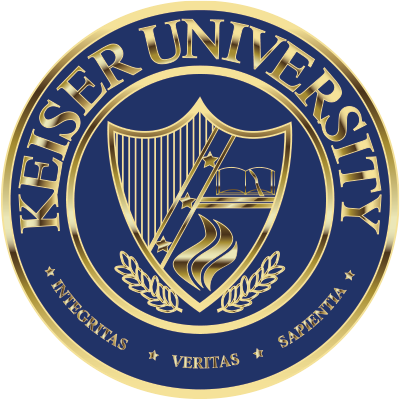
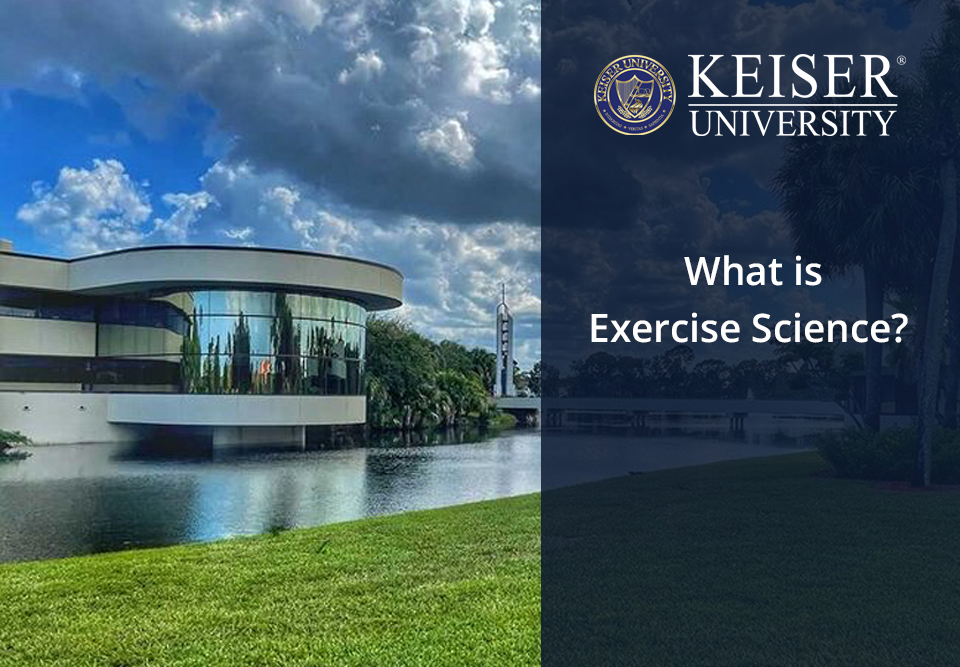

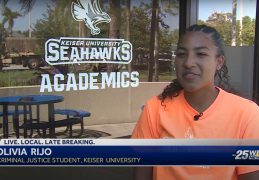
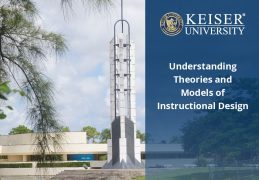
 The instructors at Keiser University impacted my life. They believed in my ability to become a great graphic designer, regardless of how I felt about my skills. KU helped to prepare me for the real world and got me to where I am today.
The instructors at Keiser University impacted my life. They believed in my ability to become a great graphic designer, regardless of how I felt about my skills. KU helped to prepare me for the real world and got me to where I am today.
